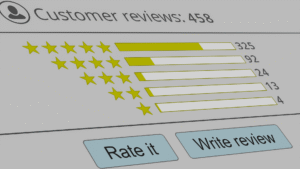Today’s marketplace is a complex, dynamic environment influenced by myriad factors from psychology to technology. Understanding consumer behavior is critical for businesses to gain a competitive edge and create successful marketing strategies. This article will delve into the psychological, social, and technological aspects of consumer behavior, shedding light on how these elements interplay and influence the decisions consumers make.
Understanding Consumer Behavior: The Role of Psychology
Consumer behavior is not a random phenomenon; it is a process influenced by various psychological factors such as motivation, perception, learning, and attitude. Consumers are driven by needs and wants, and their motivation to fulfill these desires affects their buying behavior. For instance, a person may purchase a luxury car not only for its practical function but also because it fulfills a desire for prestige and social status.
Perception, the process by which individuals select, organize, and interpret information, also plays a critical role in consumer behavior. Consumers interpret information based on their existing beliefs and attitudes, which can significantly influence their purchasing decisions. A consumer might interpret a high price as indicative of high quality, while another might perceive the same price as excessive.
Learning and attitude also impact consumer behavior. Consumers learn from their experiences, and these experiences shape their attitudes towards certain products or brands. Positive experiences can lead to positive attitudes and loyalty towards a brand, while negative experiences can result in negative attitudes and brand switching. Therefore, businesses must strive to provide positive experiences to foster favorable attitudes and loyalty among consumers.
Social and Technological Influences on Consumer Decisions
Social factors such as culture, social class, and reference groups also have a profound influence on consumer behavior. Culture is the most fundamental determinant of a person’s wants and behavior. It shapes our beliefs, values, and norms, which in turn influence our buying behavior. For example, in societies where health and fitness are highly valued, consumers are likely to spend more on health and wellness products.
Social class and reference groups also impact consumer decisions. Social class refers to the division of society into groups based on economic and social standing. Individuals from higher social classes tend to purchase high-end, luxury products, while those from lower social classes usually opt for more affordable, value-for-money products. Reference groups, such as family, friends, and celebrities, also influence consumer behavior as individuals often look to these groups for product recommendations and approval.
The advent of technology has dramatically reshaped consumer behavior. The internet and social media have made it easier for consumers to research products, compare prices, and read reviews before making a purchase. This increased access to information has made consumers more informed and discerning, forcing businesses to be more transparent and accountable. Moreover, technology has also paved the way for online shopping, which offers convenience and a wider range of products, further influencing consumer buying behavior.
In conclusion, decoding consumer behavior involves understanding the complex interplay of psychological, social, and technological factors. Businesses that can effectively understand and leverage these factors will be better positioned to meet consumer needs, shape consumer perceptions, and ultimately drive consumer decisions in their favor. As the marketplace continues to evolve, a deep understanding of consumer behavior will remain a critical success factor for businesses.
















